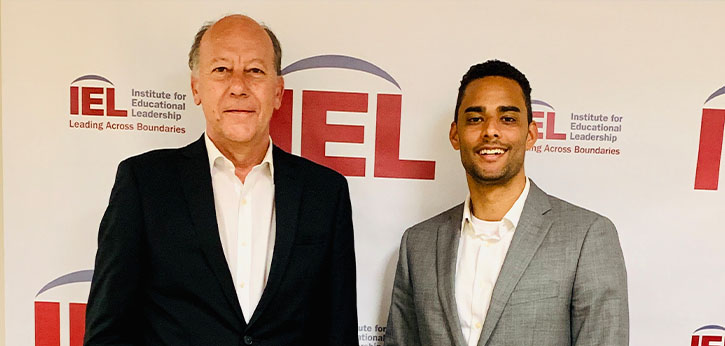When it comes to urban education in America, no reforms have caused more controversy over the last two decades than the proliferation of charter schools.
By Stefan Lallinger, 2019 Meade Fellow
When it comes to urban education in America, no reforms have caused more controversy over the last two decades than the proliferation of charter schools. Regardless of one’s stance, there is no denying their impact. As of 2016, there are 6,900 charter schools nationally serving 7% of the nation’s public students. All but seven states have laws allowing charters.
The charter coalition of strange bedfellows, conservatives who believe in market-based competition and social justice-oriented liberals who desire radically different options for historically underserved students, had shown signs of fissure in the late Obama years. In the era of charter-choice proponent U.S. Education Secretary Betsy DeVos, that coalition has frayed even further. This summer as a Meade Fellow, I traveled to D.C. to explore the effect of Secretary DeVos’ leadership on the charter landscape and the future of school choice.
The near consensus among people I visited, who ranged from academics to policymakers, is that there has been little to no substantive change in federal policy or funding for charters under DeVos, despite her reputation. However, there has been real change in both the perception of and the environment for charter schools. So, what has the source of the shift been, if not statutory?
As one professor reminded me, the power of the bully pulpit is far-reaching. Because DeVos is intensely disliked by many in public education, particularly progressives, there has been much greater scrutiny on issues with which she is associated. Moreover, states and localities, which account for 90% of education funding, take cues from what happens nationally, but these issues play out differently everywhere. The battle lines for charter schools that are drawn locally are greatly influenced by a given locality’s affinity for the administration’s agenda. Most significantly, many blue states have become significantly more charter-averse in the past two years (e.g. California’s proposed charter moratorium).
While almost everyone I talked to who works in the charter sector agreed that life for charters has gotten harder, not everyone was willing to chalk it up to DeVos. Some cited “charter fatigue,” the notion that people have grown weary of the bitter traditional-charter fights. Others noted people who had become disillusioned because charters were not the panacea they expected. Finally, some of the larger charter networks have deliberately stopped expanding, instead focusing on internal improvement and finding alternatives to no-excuses models on which many historically thrived.
To be clear, charters are not disappearing anytime soon. The annual charter appropriation, known as the “Charter Schools Program,” still receives hundreds of millions of dollars. There are thousands of thriving charters and tens of thousands of families on waitlists nationally.
Yet the biggest impact of charters on the future of public education may not be their proliferation. Many people I talked to predicted that an increasing number of traditional public school systems of the future will experiment with charter-like reforms, like deepening school-based autonomy or embracing portfolio-model districts that give students different options. We will see a lot more schools with those operational freedoms and specializations but incarnated as traditional public schools. Ironically, charters may finally live up to the original purpose that for years people have claimed they have failed to: as laboratories of innovation from which traditional public schools take best practices.
There are some important policy considerations for the future, if this is indeed where public education is headed. Charter schools have been most successful where governance provides strict accountability for academic performance and financial management but does not meddle in school-level affairs. Charter schools have also surfaced important questions about access, fairness, and the role of organized labor in education reform. How will public school systems deal with these questions? The answer to that is sure to demand our attention for years to come, regardless of who the U.S. Education of Secretary is.
Author’s biography: Stefan Lallinger is a third-year doctoral student in the EdLD program at Harvard University. He is a doctoral resident with the New York City Department of Education. Prior to graduate school, he led Langston Hughes Academy, a Pre-K through 8th grade open-enrollment school in the Recovery School District, in post-Katrina New Orleans, where he served as principal, assistant principal, and teacher for nine years. Before moving to New Orleans, he coordinated a boys mentoring program in Providence. Inspired by his grandfather, a civil rights lawyer, Stefan has been a fierce advocate for integration and equity throughout his career. He earned a bachelor’s degree in Political Science and Development Studies from Brown University and a master’s degree in History from the University of New Orleans.
